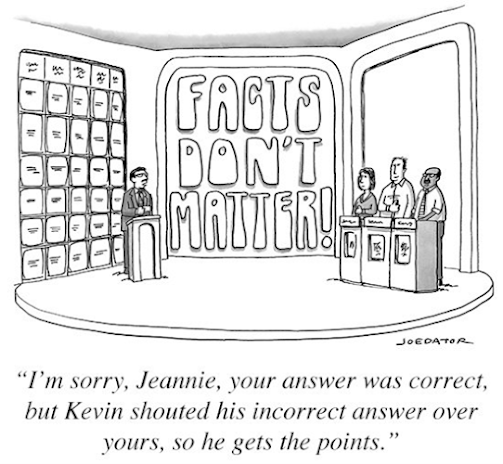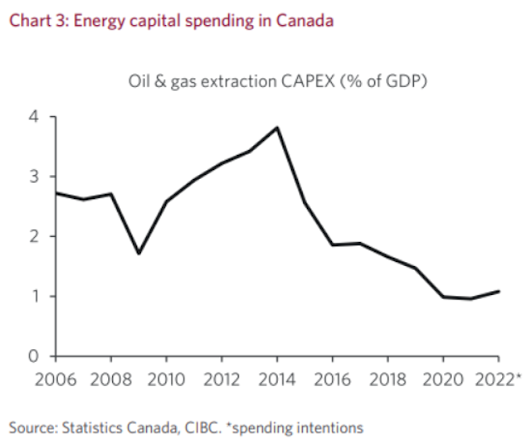An EdgePoint ESG update
In honour of Earth Day, we are excited to announce EdgePoint has fully offset the emissions of our operations through the purchase of two carbon offsetting projects, after quantifying our carbon footprint. With the assistance of external emission consultants, we identified all direct and indirect emission sources within our firm (Scope 1, 2 and select Scope 3).
Our main motivation was to improve our understanding of our emissions and strategize ways to reduce our footprint.
As we look ahead, we will continue to offset EdgePoint’s emissions on an annual basis through a mix of energy efficiency and carbon offsets.
Stay tuned for more information on our upcoming Sustainability Report.
*****
We are excited to announce we officially became a member of the International Association for Emissions Trading (IETA). The IETA is a non-profit organisation created in 1999 to establish a functional international framework for trading in greenhouse gas emission reductions. IETA’s over 200 members globally seeks to develop an emissions trading system that results in real and verifiable greenhouse gas emission reductions, while balancing economic efficiency with environmental integrity. Claire is EdgePoint’s active member with IETA and will be spearheading our involvement with IETA various members and working groups.
“IETA has been a leading voice in Canada and globally on carbon pricing and climate finance for nearly two decades. As members, we are excited to have the opportunity to participate in IETA’s various working groups that develop proposals to increase efficiency, transparency, stability, and effectiveness of carbon markets” – Claire Thornhill
EdgePoint commentaries
Why we can stay calm in the face of uncertainty – 1st quarter, 2022
This quarter, Investment team member George Droulias discusses why our investment approach helps us stay calm during uncertain times.
Earning our wings - 1st quarter, 2022
This quarter, portfolio manager Frank Mullen talks about the importance of knowing what you own – not just when to sell, but when to add.
This week in charts
US TV Streaming time
Tech Wage Inflation Puts Pressure on Companies
Wage inflation in the technology sector is accelerating, pressuring companies to boost compensation for key roles by 20% or more as they compete for a limited pool of workers skilled in areas such as cloud computing and data science.
There is no single source of data on all tech jobs, but it is clear from a range of market analysts and executives that demand for labor in the tech sector is on the rise. During the first quarter, U.S. employers posted 1.1 million tech jobs, an increase of 43% from a year earlier, according to information technology trade group CompTIA.
Demand for workers to fill those jobs has been surging since the pandemic began, prompting companies to turn to remote work and other digital initiatives. Inflation at a 40-year-high and the war in Ukraine disrupting tech and outsourcing hubs in Europe also are pushing compensation for tech workers higher.
The tech roles in greatest demand include cloud computing architects, data scientists and modelers, and machine learning experts. Staffing firm Mondo, an Addison Group company, said at the high end of the compensation range, cloud architects saw average salary increases of 25% between 2020 and this year, while average salaries for software engineers rose 11% over the same period.
The rising cost of hiring and retaining top tech talent is creating challenges for chief information officers and other tech leaders and has even caught the attention of chief executive officers. “It’s stunning,” said Michael Burns, co-founder and executive chairman of iDEAL Semiconductor Devices and managing director of the Murray Hill Group venture capital and private-equity firm. Mr. Burns said wage increases in the tech sector can top 20%, and in hot markets such as Austin, Texas, they can hit 30%.
Mosaic Forest halts logging on some of its timberlands as it opts to sell carbon credits
One of Canada’s largest timber companies is setting aside 40,000 hectares of British Columbia coastal forests – woodlands three times larger than the city of Vancouver – after concluding it can make more money from letting trees grow and selling carbon credits than from logging.
On Wednesday, Mosaic Forest Management announced it will defer the harvesting of “old forests” on Vancouver Island and Haida Gwaii for at least 25 years, opting instead to sell nature-based carbon credits to companies that want to offset a portion of their greenhouse gas emissions. The Vancouver-based company is halting logging on 7 per cent of its timberlands, calling it the largest project of its kind in Canada.
Mosaic estimates the program, which it calls the BigCoast Forest Climate Initiative, will generate between $100-million and $300-million, based on current prices for carbon credits. In an interview, Mosaic chief forester Domenico Iannidinardo said: “We expect to make at least as much from the BigCoast initiative as we would earn from harvesting these forests.”
Mosaic oversees forest holdings for two B.C. companies – TimberWest Forest Corp. and Island Timberlands L.P. – which are owned by two pension plans: the British Columbia Investment Management Corp. and the Public Sector Pension Investment Board.
“The BigCoast Forest Climate Initiative brings high-quality, large-scale, nature-based carbon credits to a growing international market,” Mosaic chief executive officer Jeff Zweig said in a news release. “The initiative generates economic value, contributes to the global effort to reduce carbon emissions, and benefits our local partners.”
This week’s fun finds
Envy the optimist, not the genius
The modern world is said to over-reward academic intelligence, and so it does. Of the most successful people I know, though, none are the very smartest in their organisations, much less their generational cohorts. Beyond a certain cognitive level, another trait seems to become more decisive. “Optimism” is the crispest word for it, but it gives a banal ring to what is a complex and eerie mental gift: the sifting for good news among the bad, the willingness to magnify and even invent some, the reinterpretation of adverse events as what one had wanted all along. It can border on self-deception. But it also gets people through the night. And the most underrated component of success is continuing to show up.
Whether optimism is genetic or learned, it is, I am sure — in a way I wasn’t when I hadn’t met any high-fliers — worth more than extreme intelligence. Few executives or entrepreneurs I have ever known have said anything brilliant or novel. If an enviable attribute comes across, it is an almost constitutional inability to mope. This, as the Gordon Gekko picture of business misses, is the commercial psyche: not the seeking of advantage in everything, but the seeing of it.
Optimism is, in part, what Oliver Wendell Holmes had in mind when he called Franklin Roosevelt a “second class intellect” with a “first class temperament”. It should be obvious that he meant it as praise. But it is almost as clear that, forced to choose, most 21st-century tiger parents would wish the inverse traits on their children. It is hard to fault their logic. Intellect is more measurable and certainly more coachable than temperamental buoyancy. The worldwide struggle for places at top universities is Darwinian, if not Hobbesian. Still, as I see friends enter the hot-housing phase of white-collar parenthood, I sense they overrate the marginal returns to brain power beyond a certain (admittedly high) point.
Benefits of Starting Your Day with a Cold Shower
Hydrotherapy is simply the use of water as a natural medicine or treatment. Leveraging water in its various forms, such as ice or steam, and at various temperatures, from ice cold to practically scalding, has been used to treat various maladies since the beginning of time.
Research published in the North American Journal of Sciences (NAJS) revealed some interesting findings regarding the consistent use of cold showers as a form of therapy. For one, cold showers result in a significant increase in dopamine concentrations. (Dopamine is a neurotransmitter that regulates learning, attention, emotional responses, and physical movement.)
In addition, recent research has found a link between low dopamine levels and the brain’s ability to form new memories, prompting additional research into dopamine’s impact on Alzheimer’s disease. The correlation between cold showers and increased dopamine has the potential to positively impact natural approaches taken toward preventing cognitive decline.
Another benefit of cold showers reported by NAJS is the reduction of cortisol production, also known as the dreaded stress hormone. When our cortisol levels are at their best, this hormone plays a role in regulating our metabolism, reducing inflammation in the body, balancing the salt and water equation within our bodies, maintaining healthy blood pressure, and helping with memory formation.
But when cortisol levels are excessive, it often leads to belly fat, high blood pressure, and mood swings which show as anxiety, depression and/or irritability. Additional clinical research studies affirmed that cold showers not only decreased inflammation in study participants but also showcased two additional benefits. Study participants reported significant analgesic effects as well as substantial benefits associated with improved sleep patterns.
But the scientifically-reported benefits of cold showers don't end there. The skin, which is the body's largest organ, is laden with cold receptors. When the skin is shocked by the sensation of cold water, it sends an astounding number of electrical impulses from the peripheral nerve endings to the brain, a process that has been shown to decrease depressive symptoms.
Most notably is a study conducted in the Netherlands with more than 3,000 participants which revealed that consistently ending a shower with 30+ seconds of cold water resulted in a 29% reduction of self-reported sick leave from work.






























